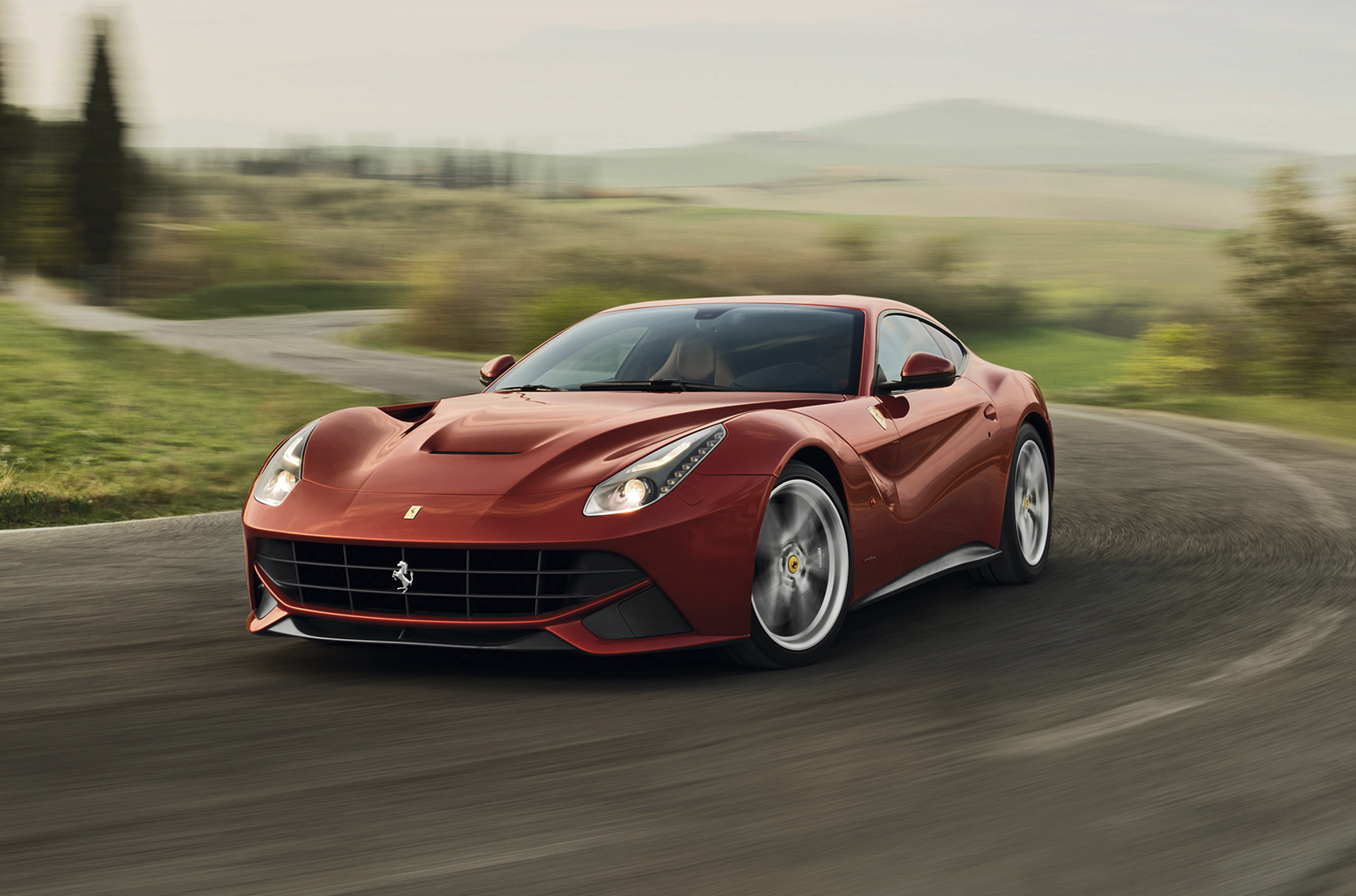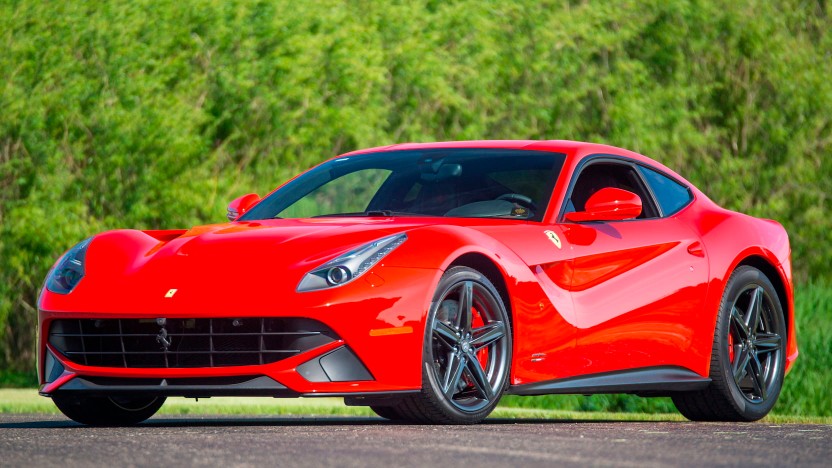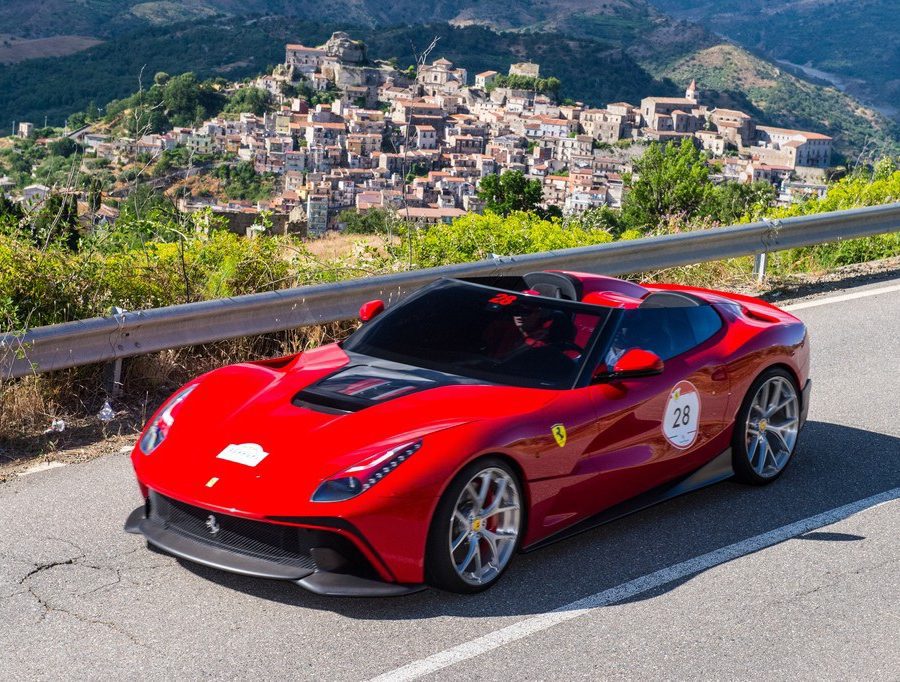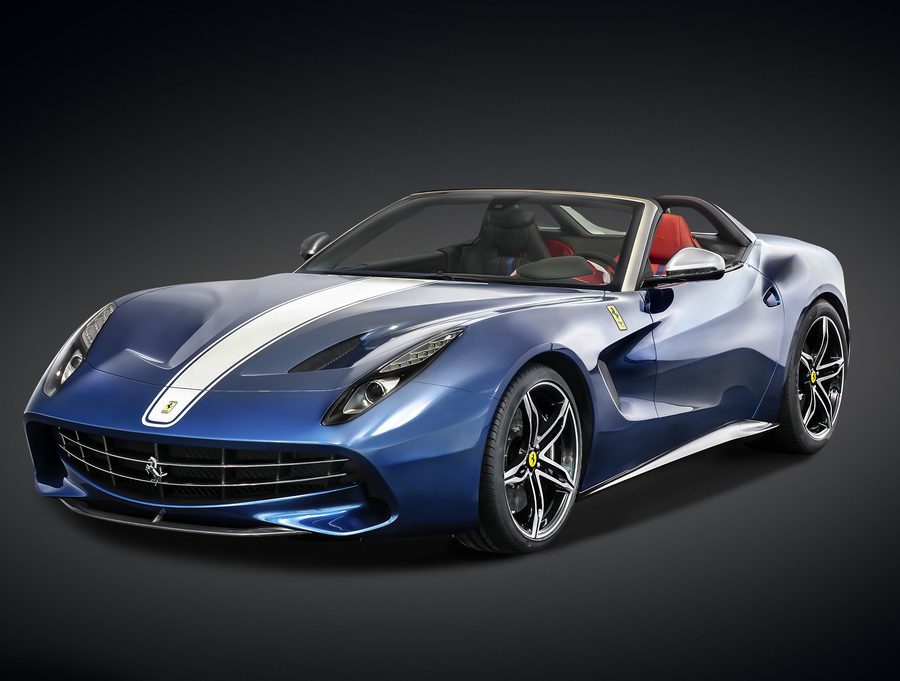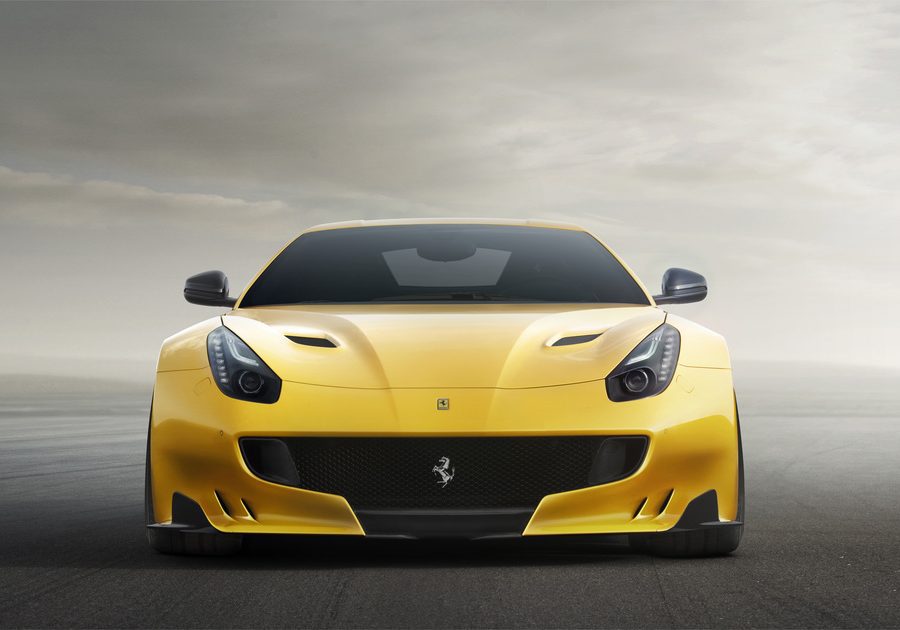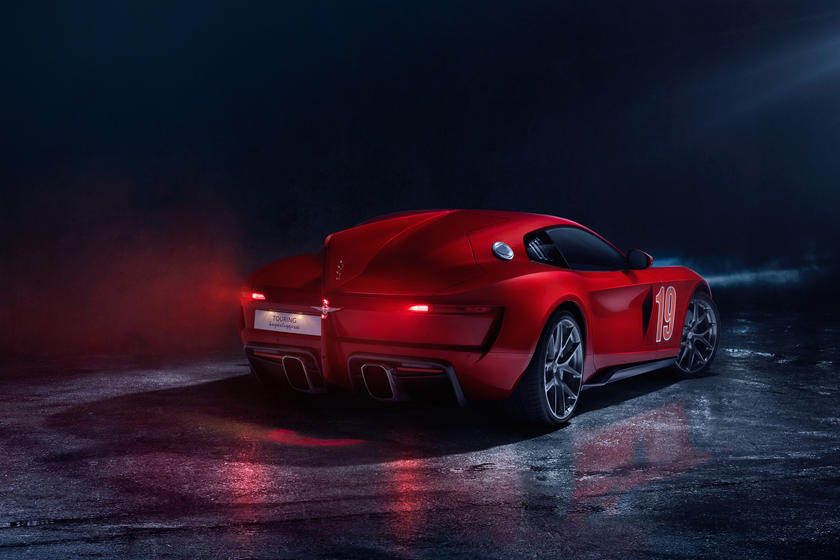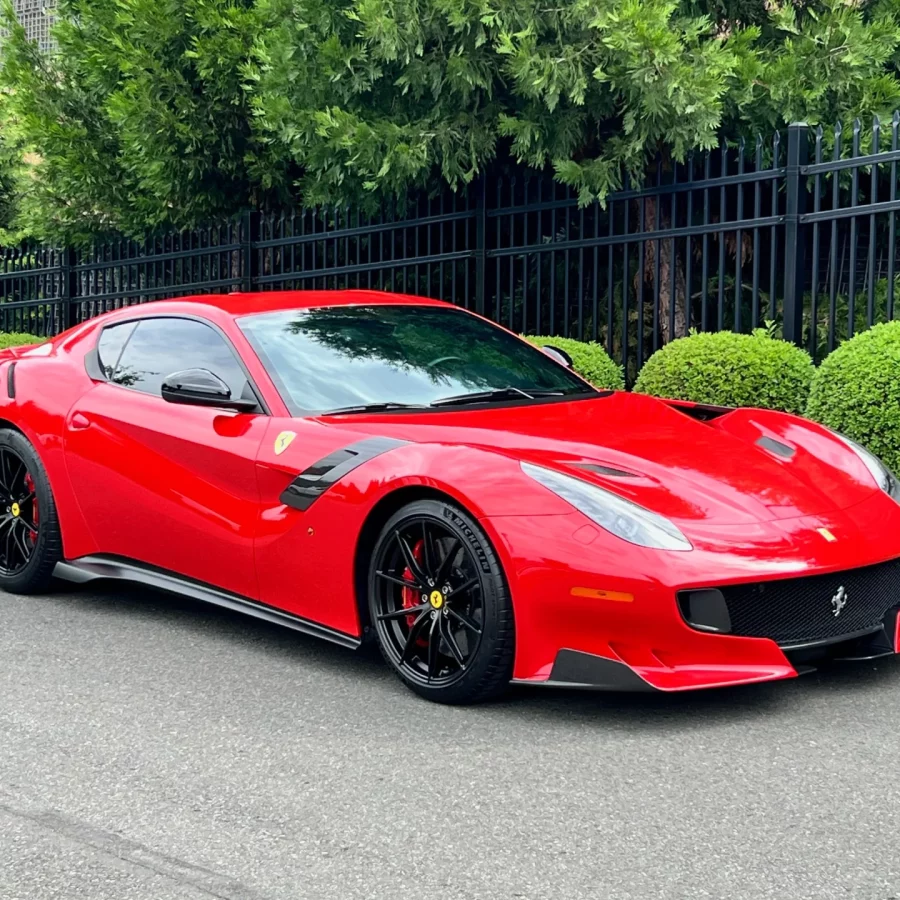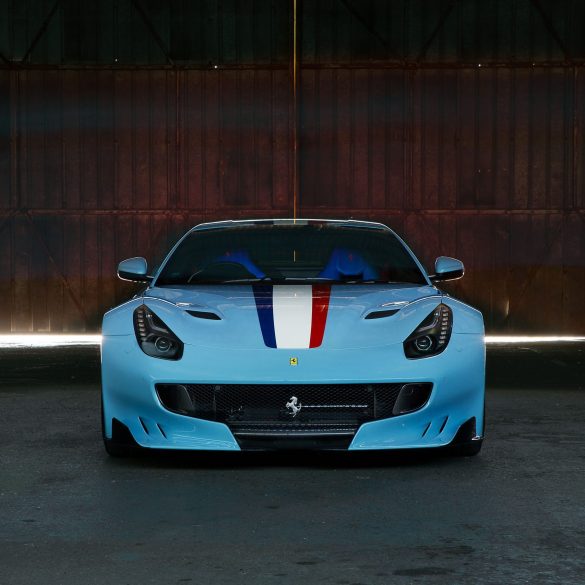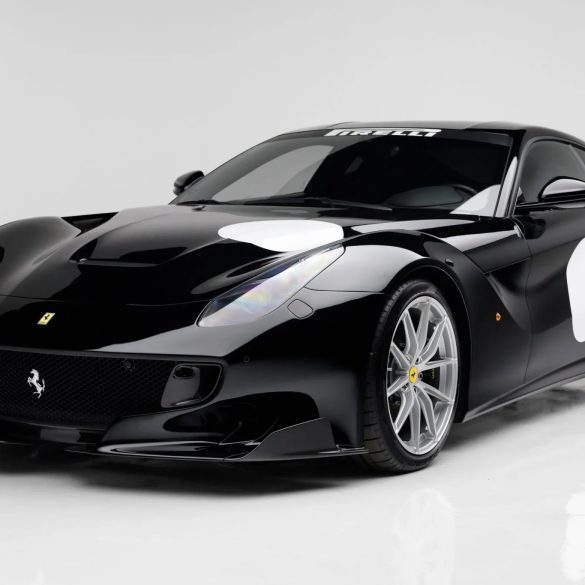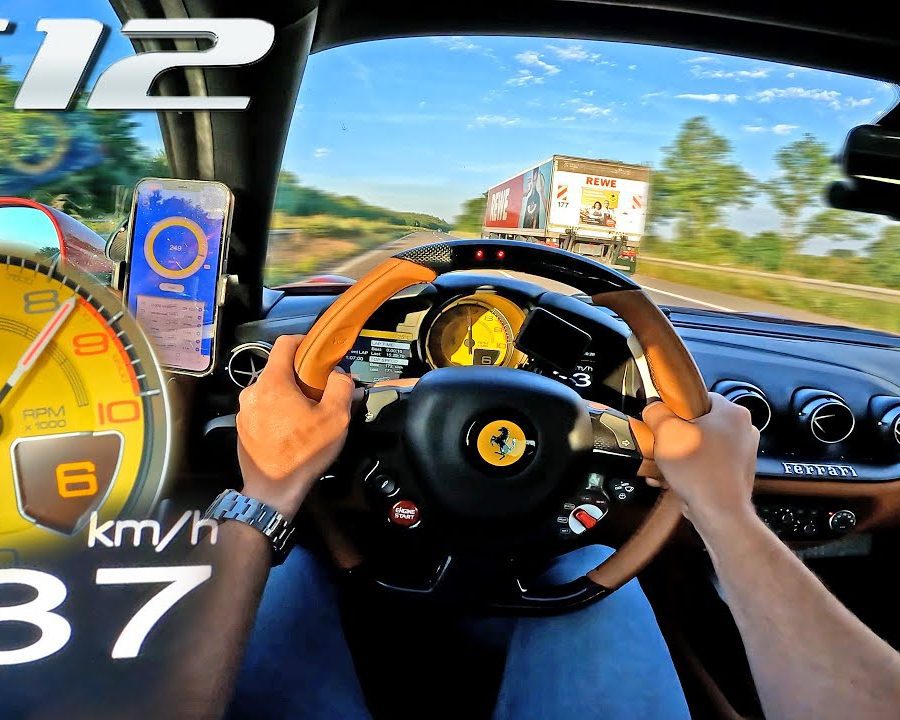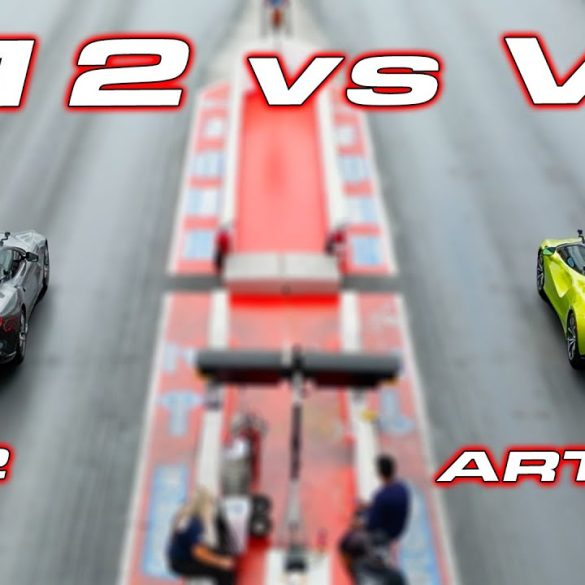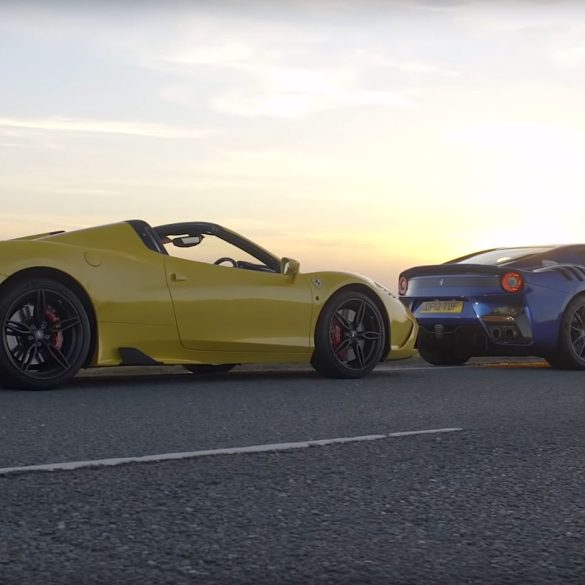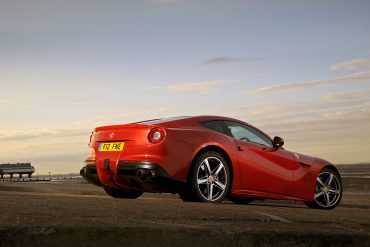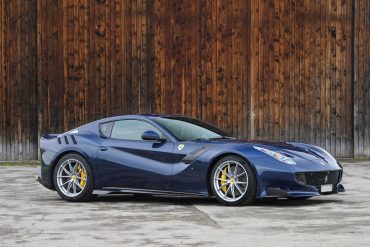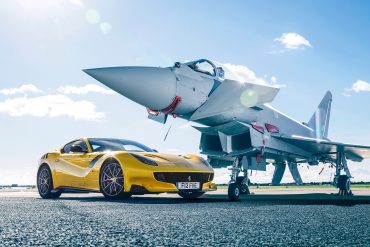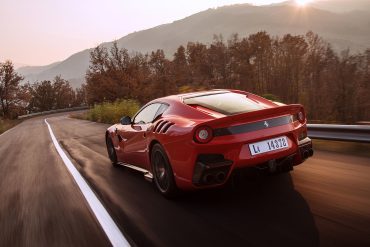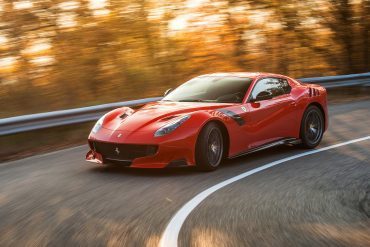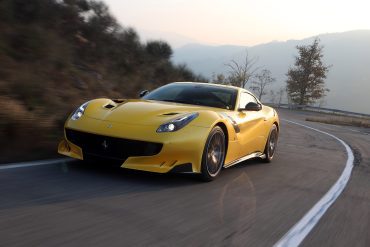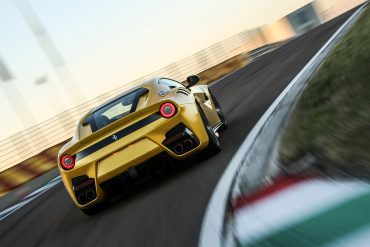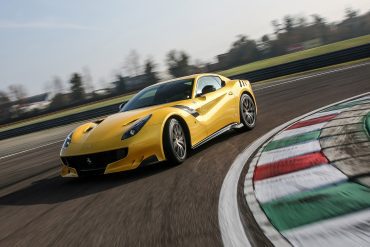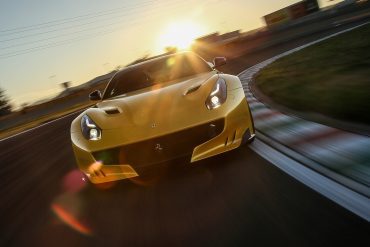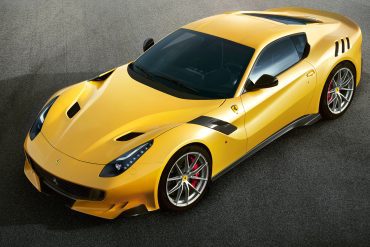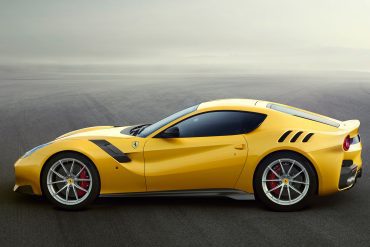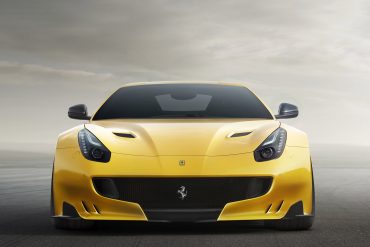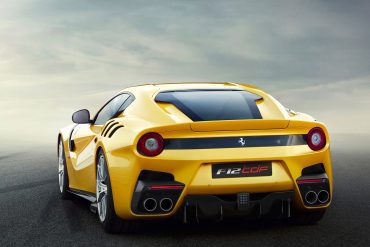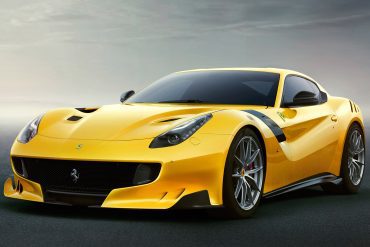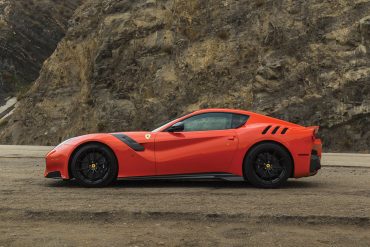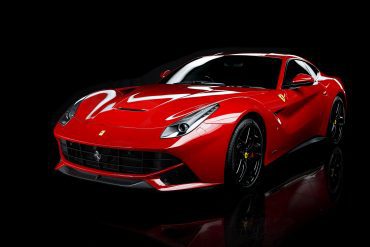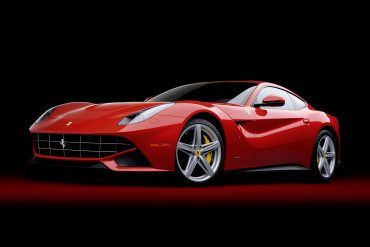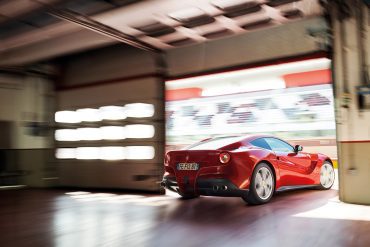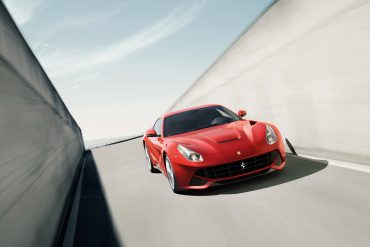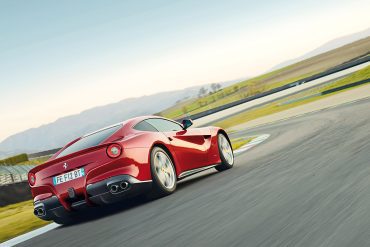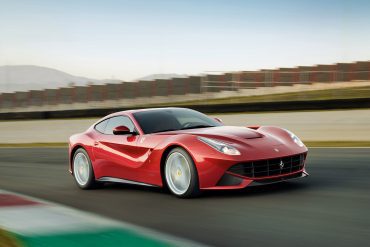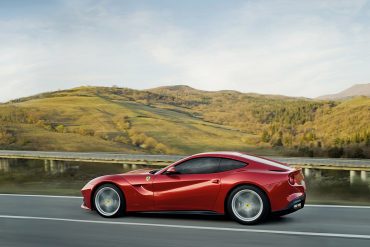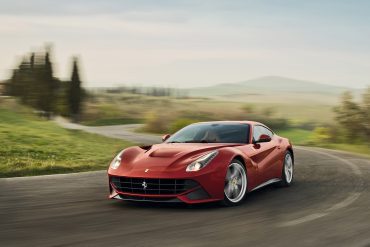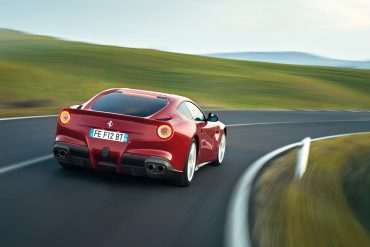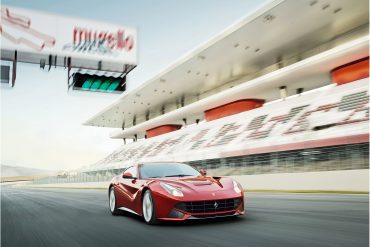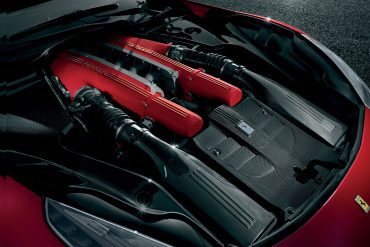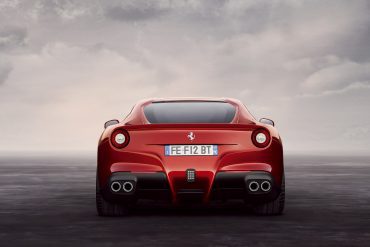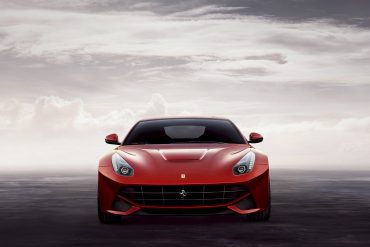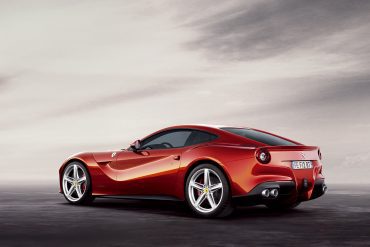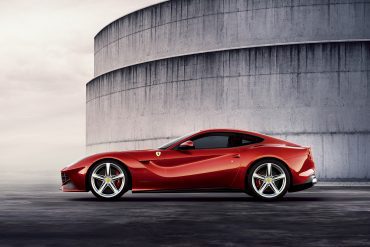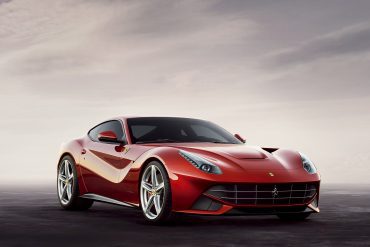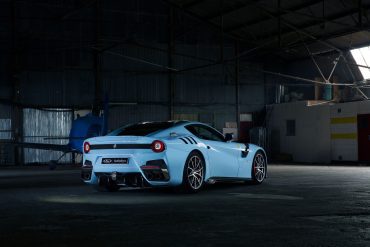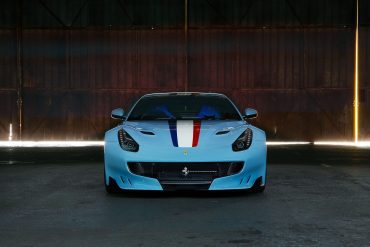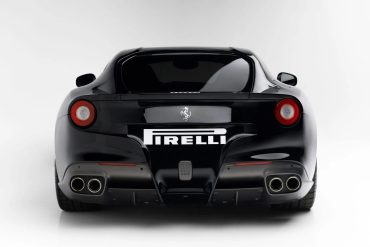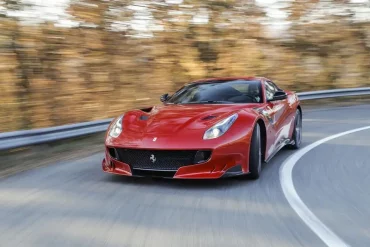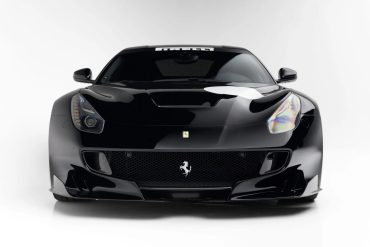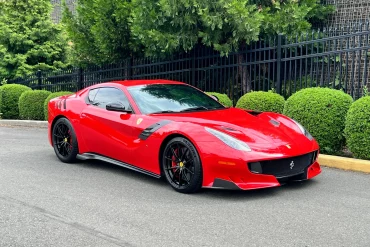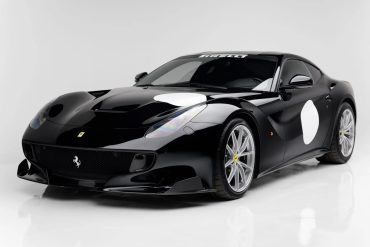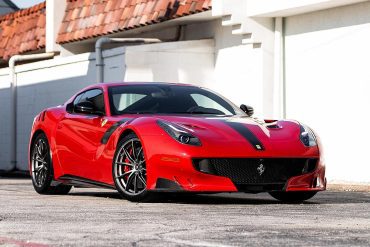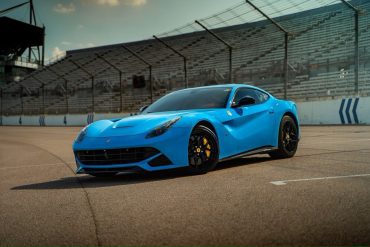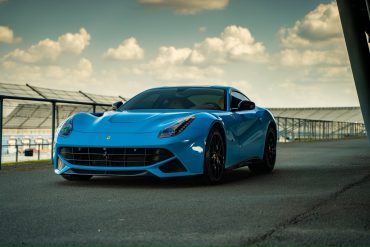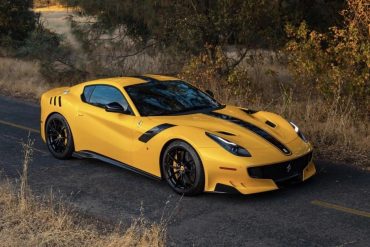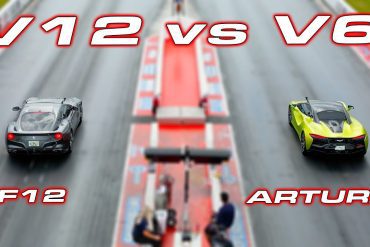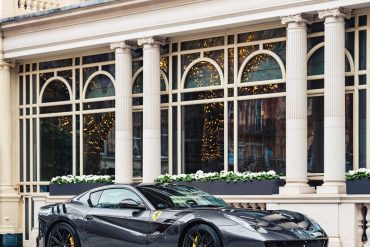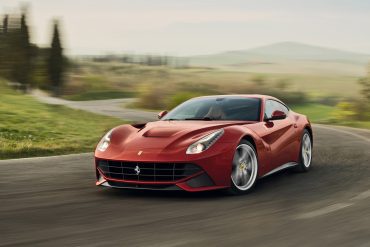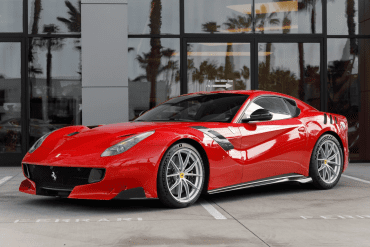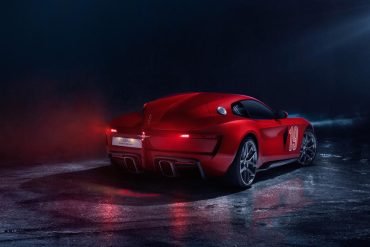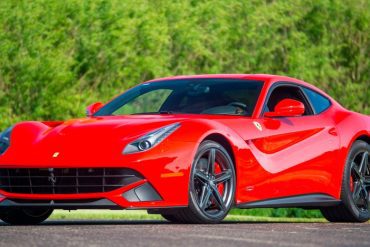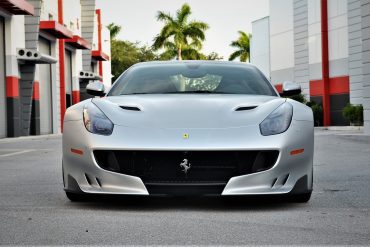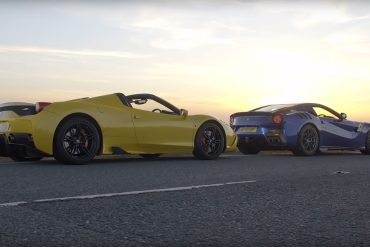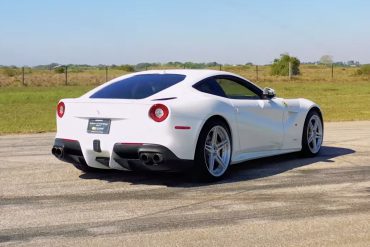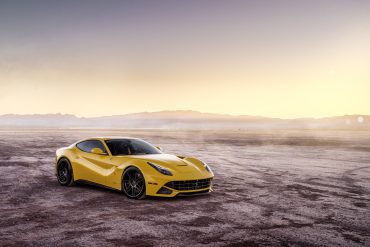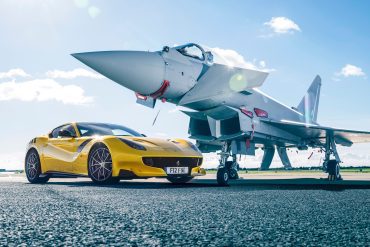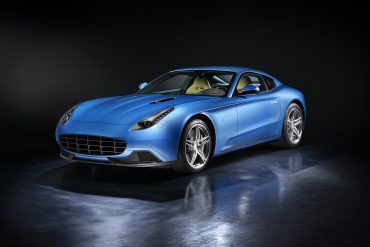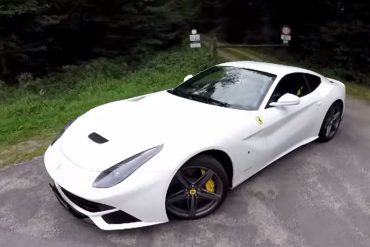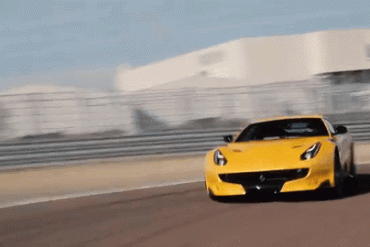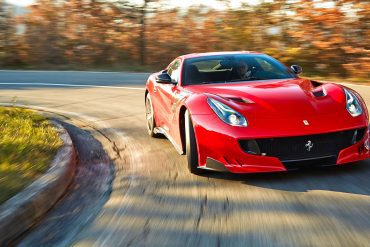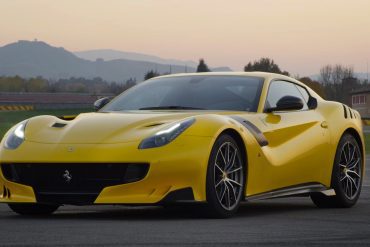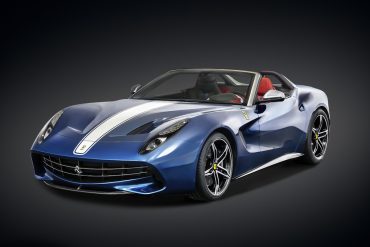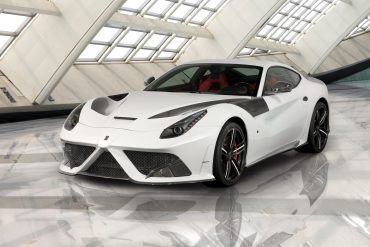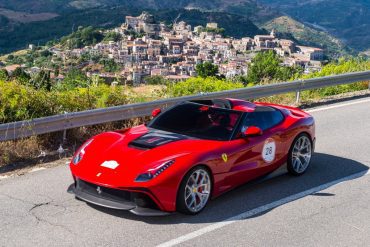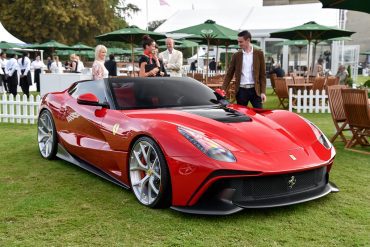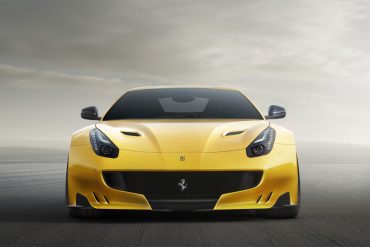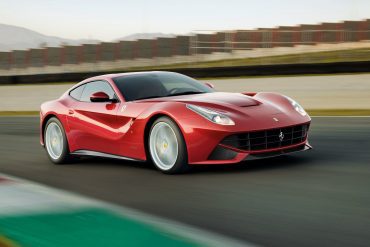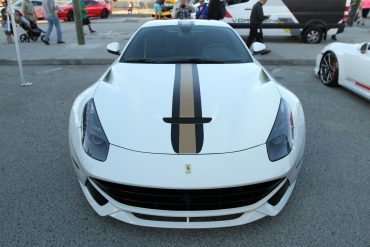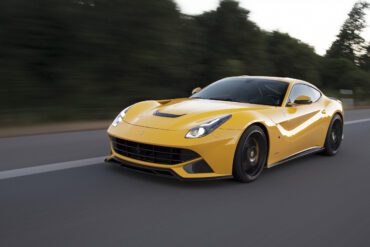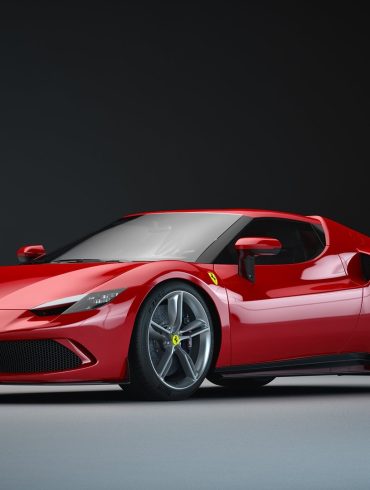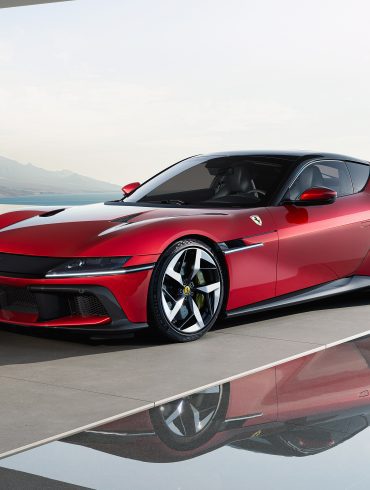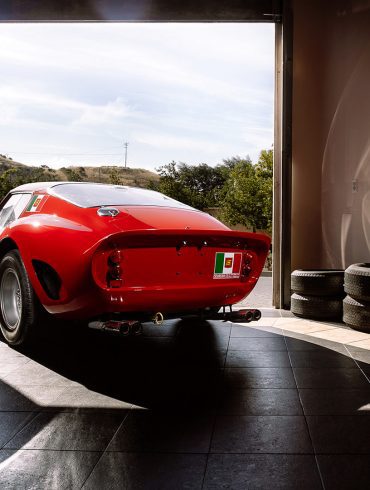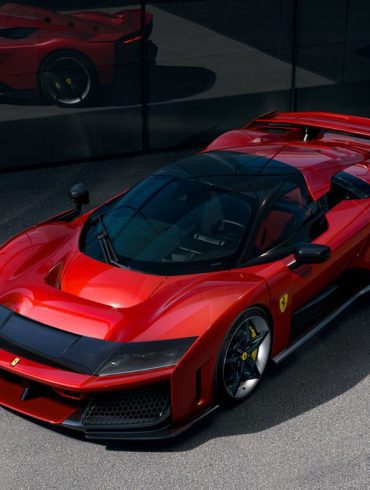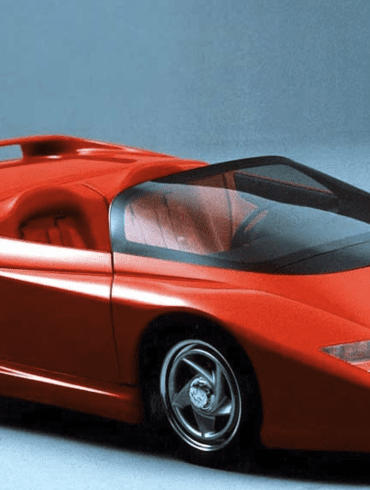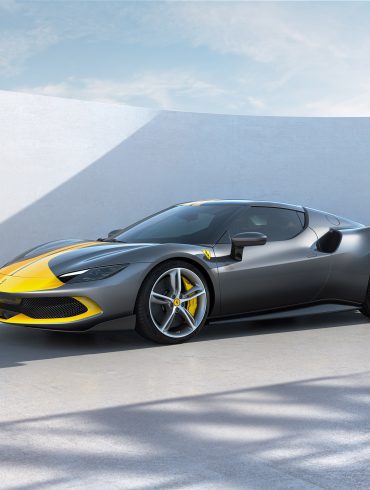If we take a good look at the history of Ferrari, we can see that once in a while, Ferrari come out with a really exceptional car that is above the rest. Examples to support this statement would be the Ferrari F40, Enzo, and most definitely the Ferrari F12 Berlinetta....
Ferrari F12
The Ultimate Guide
Launched in 2012, the F12berlinetta captured the hearts of enthusiasts with its naturally aspirated V12 engine, delivering breathtaking power and precision. This guide will take you through every detail of the Ferrari F12 family, from its history and engineering marvels to its iconic variants like the F12tdf, F12 TRS, and unique one-offs crafted by Ferrari’s Special Projects division. Explore the specifications, design elements, performance insights, and legacy of each model variant as we dive deep into what makes the Ferrari F12 series one of the most beloved modern V12 Ferraris.
Overview / Variants / Models In-Depth / Buyer's Guide / Videos / Images / More Updates
Ferrari F12 - A GT With Staggering Performance
The Ferrari F12 series is a masterpiece in Ferrari’s V12 lineage, capturing the essence of a true grand tourer with staggering performance, refined luxury, and breathtaking design.
Launched in 2012, the F12berlinetta set a new benchmark for front-engine V12 supercars, combining cutting-edge technology with a rich legacy of Ferrari’s engineering prowess.
Over the years, the F12 family expanded with unique, high-performance variants like the F12tdf and bespoke one-offs from Ferrari’s Special Projects division. Here’s an in-depth look at the Ferrari F12’s history, its model variants, performance achievements, legacy, and how it was received by automotive critics and enthusiasts alike.
Ferrari’s Front-Engine V12 Evolution
The Ferrari F12berlinetta debuted at the 2012 Geneva Motor Show as the successor to the Ferrari 599 GTB Fiorano, representing the next chapter in Ferrari’s long tradition of front-engine V12 grand tourers.
Named after the Fiorano Circuit, Ferrari’s private test track, the F12 was developed to be both a high-performance supercar and a luxurious GT. Designed by Ferrari in collaboration with Pininfarina, the F12berlinetta embraced aerodynamic innovations and weight-saving technology to push the limits of Ferrari’s GT capabilities.
Under the hood, the F12 was powered by a naturally aspirated 6.3-liter V12 engine derived from the Ferrari FF, producing a remarkable 730 horsepower and 509 lb-ft of torque. This allowed the F12 to accelerate from 0-60 mph in just 3.1 seconds and reach a top speed of over 211 mph, making it one of the fastest road-going Ferraris of its time.
At its launch, Ferrari emphasized the F12’s versatility, highlighting its ability to transition seamlessly from the track to the open road, making it a standout model in Ferrari’s GT lineup.
Sculpted for Performance and Elegance
The F12berlinetta was not only a technical marvel but also a showcase of Ferrari’s design philosophy, where form meets function.
Aerodynamic Innovations: Ferrari engineered the F12 with a focus on aerodynamics, incorporating features like the “Aero Bridge” and “Blown Spoiler” to channel airflow over and around the car, reducing drag and increasing downforce. These elements are subtly integrated into the design, giving the F12 a sleek and powerful appearance.
Lightweight Construction: Ferrari used a combination of 12 different aluminum alloys to reduce the F12’s weight while enhancing structural rigidity. This weight reduction contributed to the F12’s agility, giving it the handling dynamics of a lighter, more track-focused car.
Luxurious Interior: Inside, the F12 featured a driver-focused cockpit with high-quality materials, leather upholstery, and carbon fiber accents. Ferrari’s trademark “manettino” switch on the steering wheel allowed drivers to adjust driving modes, from comfortable touring to aggressive track settings, emphasizing the F12’s versatility.
Top Gear praised the F12’s design, stating, “It’s a car that looks as fast as it is—sculpted, aggressive, and yet refined, embodying the perfect balance of power and elegance.”
Naturally Aspirated V12 Brilliance
The heart of the Ferrari F12berlinetta is its naturally aspirated V12 engine, celebrated for its responsiveness, linear power delivery, and captivating exhaust note.
Raw Power: The 6.3-liter V12 engine delivers 730 horsepower at 8,250 rpm and 509 lb-ft of torque at 6,000 rpm, propelling the F12 to blistering speeds. With a redline of 8,700 rpm, the F12’s engine allows drivers to experience the full range of the V12’s power, making it one of the most exhilarating engines Ferrari has produced.
Transmission and Gearbox: Ferrari paired the F12 with a 7-speed dual-clutch transmission that enabled lightning-fast shifts, reducing shift times to just milliseconds. This transmission provided smooth, precise control, allowing the F12 to deliver both comfort and aggression on demand.
Handling Dynamics: The F12 features Ferrari’s E-Diff, F1-Trac traction control, and SCM-E (magnetorheological) suspension systems, which work together to optimize handling and cornering stability. These systems adjust in real-time based on road conditions and driver inputs, making the F12 surprisingly agile for a front-engine V12 grand tourer.
Car and Driver described the F12berlinetta as “a performance machine that feels alive at any speed,” noting its “perfect blend of sophistication and raw power” as one of its standout features.
High-Performance Special Editions
The Ferrari F12 series includes several high-performance variants and unique one-offs that showcase Ferrari’s dedication to pushing the limits of design, power, and exclusivity.
Ferrari F12tdf (Tour de France)
The Ferrari F12tdf was introduced in 2015 as a limited-edition, track-focused variant of the F12berlinetta, inspired by Ferrari’s victories in the legendary Tour de France road races of the 1950s and 60s.
Increased Power and Weight Reduction: The F12tdf’s V12 engine was tuned to produce 769 horsepower and 520 lb-ft of torque, while Ferrari shaved 220 pounds off the weight by using lighter materials and a stripped-down interior.
Enhanced Aerodynamics and Handling: Ferrari added a rear-wheel steering system called “Virtual Short Wheelbase,” which improved agility by steering the rear wheels in coordination with the front wheels. Aggressive aerodynamic changes, including a wider rear diffuser, side skirts, and a larger rear spoiler, increased downforce by 87%.
Autocar praised the F12tdf for its “brutal power and sharp handling,” calling it “one of Ferrari’s most thrilling and challenging modern supercars.”
Ferrari F12 TRS
The Ferrari F12 TRS is a one-off, open-top roadster created by Ferrari’s Special Projects division in 2014. Inspired by Ferrari’s iconic 250 Testa Rossa, the F12 TRS embodies the raw excitement of a V12 Ferrari with a unique barchetta-style design.
Bespoke Open-Top Design: The F12 TRS features a completely open cockpit with a wraparound windshield, offering an immersive driving experience. The car’s styling includes custom bodywork with sleek, minimalist lines and a lower profile.
Unmatched Exclusivity: As a one-off model, the F12 TRS is a collector’s dream, representing the height of Ferrari’s bespoke craftsmanship and passion for design.
Ferrari SP 275 RW Competizione
Commissioned by a dedicated Ferrari collector in 2016, the SP 275 RW Competizione is a one-off model inspired by the classic Ferrari 275 GTB and based on the F12’s platform. It features unique bodywork, retro styling elements, and the powerful V12 engine from the F12tdf.
Classic Design Elements: The SP 275 RW Competizione includes signature design cues like a reimagined front grille, fender louvers, and a distinct rear end, paying homage to Ferrari’s heritage while maintaining the F12’s modern performance.
5. Critical Reception and Legacy
The Ferrari F12berlinetta and its variants have earned widespread acclaim for their balance of luxury and unbridled power, with many reviewers describing it as a near-perfect grand tourer.
Motor Trend stated that the F12 “redefines what a front-engine GT can be,” praising its ability to handle both high-speed touring and track days with equal ease. The F12’s naturally aspirated V12 engine has been especially celebrated, as Ferrari’s shift toward hybridization and turbocharging has made such engines rare in the modern era.
The F12tdf, with its intense performance focus, was viewed as one of Ferrari’s most thrilling and challenging modern supercars, appealing to purists and track enthusiasts. Ferrari’s Special Projects division took the F12 platform further with exclusive models like the F12 TRS, showcasing Ferrari’s commitment to custom craftsmanship and design for its most dedicated clients.
The F12berlinetta’s legacy is defined by its ability to embody Ferrari’s passion for powerful, front-engine V12 cars, carrying forward a lineage that began with models like the 250 GT and 365 GTB/4 Daytona. As one of Ferrari’s last naturally aspirated V12 grand tourers, the F12 has become a modern classic, highly sought after by collectors and enthusiasts.
A Modern Masterpiece in Ferrari’s V12 Legacy
The Ferrari F12 series, from the elegant F12berlinetta to the extreme F12tdf and exclusive one-offs, exemplifies Ferrari’s commitment to powerful, front-engine V12 grand tourers. Combining breathtaking performance, luxury, and a deep connection to Ferrari’s heritage, the F12 series remains one of the most celebrated V12 models of the modern era. Whether admired for its technical brilliance or sought after for its future investment potential, the Ferrari F12 series stands as a symbol of Ferrari’s engineering excellence and the timeless allure of naturally aspirated V12 power.
Ferrari F12 Specs
Manufacturer: Ferrari
Production: 2012–2017
Assembly: Maranello, Italy
Designer: of Flavio Manzoni
Class: Grand tourer (S)
Body style: 2-door berlinetta
Layout: Front mid-engine, RWD
Engine: 6.3 L F140 FC/FG V12
Power: F12: 730 hp, F12tdf: 769 hp
Transmission: 7-speed F1 DCT dual-clutch
Wheelbase: 2,720 mm (107.1 in)
Length: 4,618 mm (181.8 in)(f12berlinetta), 4,656 mm (183.3 in) (f12tdf)
Width: 1,942 mm (76.5 in) (f12berlinetta), 1,961 mm (77.2 in)(f12tdf)
Height: 1,273 mm (50.1 in)
Kerb weight: 1,520 kg (3,351 lb) (f12tdf), 1,630 kg (3,594 lb) (f12berlinetta)
Predecessor: Ferrari 599
Successor: Ferrari 812 Superfast
Did You Know?
The F12's 6.3-liter naturally aspirated V12 engine produced a staggering 730 horsepower, making it the most powerful naturally aspirated Ferrari road car ever produced at the time of its release.
Despite being larger and more powerful than the 599 GTB Fiorano, the F12berlinetta is actually lighter thanks to the use of lightweight materials like aluminum and carbon fiber.
Ferrari F12 Variants
Below we delve deep into the world of this V12-powered masterpiece, exploring its evolution from the exhilarating F12berlinetta to the track-focused F12tdf. We'll even venture into the realm of exclusive special editions and one-off creations from Ferrari's Special Projects team and renowned coachbuilders. Whether you're a seasoned Ferraristi or a curious newcomer, this is your comprehensive passport to the captivating world of the F12.
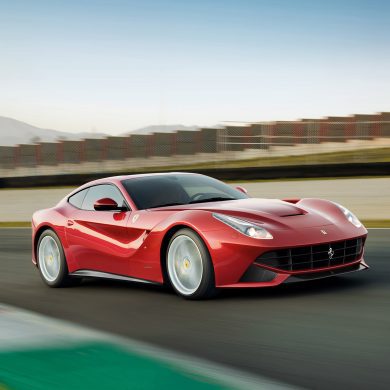
Ferrari F12berlinetta
Type: Production Car
Years: 2012 - 2017
Production: N/A
Engine: 6.3 L Nat Asp V12
Power: 730 bhp @ 8250 rpm
Torque: 509 lb/ft @ 6000 rpm
0-60 mph: 3.1 seconds
Top Speed: 211 mph
Equipped with a naturally aspirated 6.3-liter V12 engine producing 730 horsepower and 509 lb-ft of torque, the F12berlinetta was Ferrari’s most powerful road car upon release. Its design, crafted by Pininfarina, combines sleek aerodynamic efficiency with aggressive styling, featuring a low hood, sculpted flanks, and innovative air channels like the “Aero Bridge” to reduce drag while enhancing downforce. Learn more.
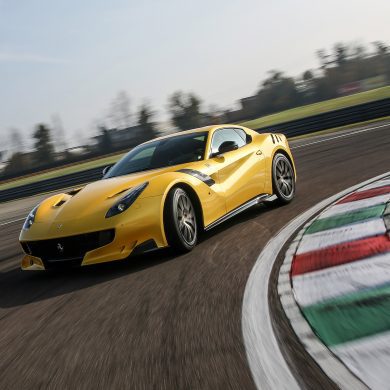
Ferrari F12tdf
Type: Special Edition
Years: 2015 - 2017
Production: 799 units
Engine: 6.3 L Nat Asp V12
Power: 769 bhp @ 8500 rpm
Torque: 520 lb/ft @ 6750 rpm
0-60 mph: 2.9 seconds
Top Speed: 211 mph
The Ferrari F12tdf was introduced in 2015 as a tribute to Ferrari’s legendary success in the Tour de France road race during the 1950s and 60s. Powered by an upgraded 6.3-liter naturally aspirated V12 engine producing 769 horsepower and 520 lb-ft of torque. Ferrari extensively modified the F12’s aerodynamics and handling, equipping the F12tdf with “Virtual Short Wheelbase” system. It was limited to just 799 units. Learn more.
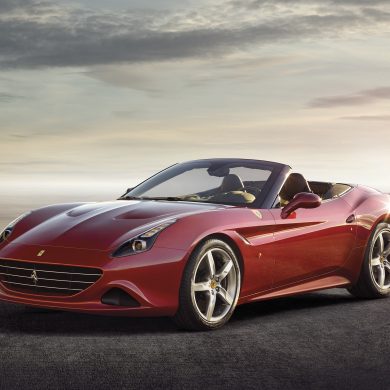
Ferrari F12 TRS
Type: One-Off Special
Years: 2014
Production: 2 units
Engine: 6.3 L Nat Asp V12
Power: 730 bhp @ 8250 rpm
Torque: 509 lb/ft @ 6000 rpm
0-60 mph: 3.1 seconds
Top Speed: 211 mph
The Ferrari F12 TRS is a one-off based on the Ferrari F12berlinetta, created by Ferrari’s Special Projects in 2014. It was specifically inspired by the 1957 250 Testa Rossa. With an open-top design and a striking, aggressive aesthetic, it has a unique wraparound windshield, a sharp, sculpted body, and a low-slung profile that enhances its sense of speed. Beneath, the F12 TRS retains the F12s 6.3L V12 engine and 730hp. Learn more.
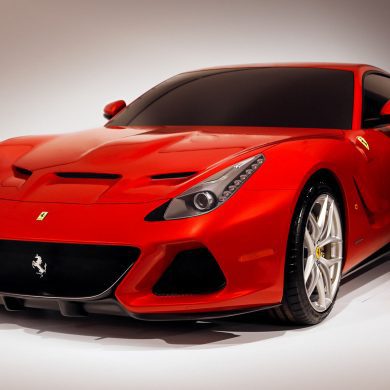
Ferrari SP America
Type: One-Off Special
Years: 2014
Production: 1 unit
Engine: 6.3 L Nat Asp V12
Power: 730 bhp @ 8250 rpm
Torque: 509 lb/ft @ 6000 rpm
0-60 mph: 3.1 seconds
Top Speed: 211 mph
The Ferrari SP America is a one-off based on the F12 completed in 2014 and developed under Ferrari's Special Projects programme with Pininfarina. It features custom bodywork, including a redesigned hood with three vents. It also has unique vents on the fenders and slats behind the windows, as well as a redesigned front bumper and redesigned rear end with a large diffuser and an integrated spoiler. The car was commissioned by Danny Wegman, CEO of Wegmans.
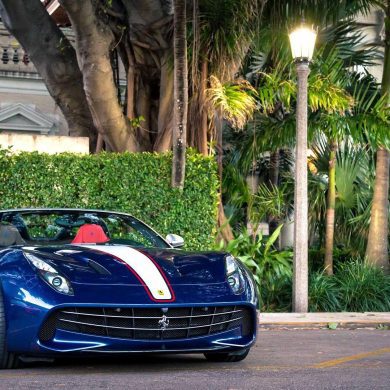
Ferrari F60 America
Type: Special Edition
Years: 2014
Production: 10 units
Engine: 6.3 L Nat Asp V12
Power: 730 bhp @ 8250 rpm
Torque: 509 lb/ft @ 6000 rpm
0-60 mph: 3.1 seconds
Top Speed: 211 mph
Created to celebrate Ferrari’s 60th anniversary in North America in 2014, only ten units of this open-top V12 roadster were produced, making it one of the rarest Ferraris of the modern era. Based on the F12berlinetta, the F60 America retains the same formidable 6.3-liter naturally aspirated V12 engine, but the F60 America stands out with its unique design, featuring an open-top configuration, a revised front fascia, distinctive American flag-inspired livery, and bespoke details throughout. Learn more.
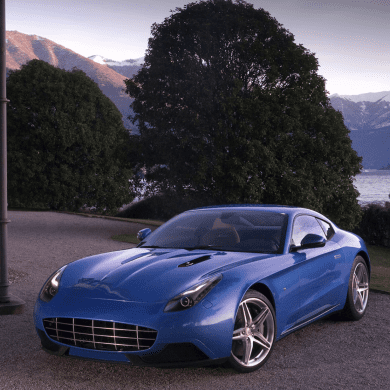
Ferrari F12 Touring Berlinetta Lusso
Type: Coachbuilt Special
Years: 2015
Production: 5 units
Engine: 6.3 L Nat Asp V12
Power: 730 bhp @ 8250 rpm
Torque: 509 lb/ft @ 6000 rpm
0-60 mph: 3.1 seconds
Top Speed: 211 mph
Carrozzeria Touring created the Touring Berlinetta Lusso, a two-seater, three-box coupé based on the F12berlinetta. Carrozzeria Touring developed the car on a client's request. The car has coachbuilt bodywork with each body panel of the car made from hand beaten aluminium. Mechanically, it is the same as the F12berlinetta, as are the headlamps and tail lamps. A production run of five examples was announced.
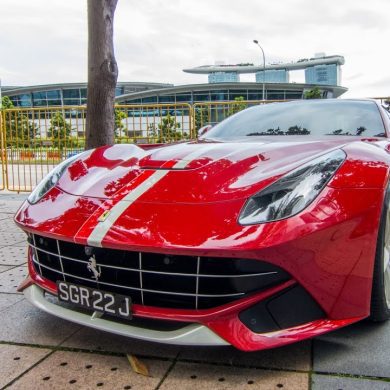
Ferrari F12berlinetta SG50 Edition
Type: One-Off Special
Years: 2015
Production: 1 unit
Engine: 6.3 L Nat Asp V12
Power: 730 bhp @ 8250 rpm
Torque: 509 lb/ft @ 6000 rpm
0-60 mph: 3.1 seconds
Top Speed: 211 mph
The Ferrari F12berlinetta SG50 Edition is a unique, one-off model created by Ferrari to celebrate Singapore’s 50th year of independence in 2015. The SG50 Edition features bespoke design details that honor Singapore’s milestone anniversary, including a striking red and white color scheme inspired by the Singaporean flag. Unique touches include a red leather and Alcantara interior with white contrast stitching and special SG50 badges on the headrests and door sills.
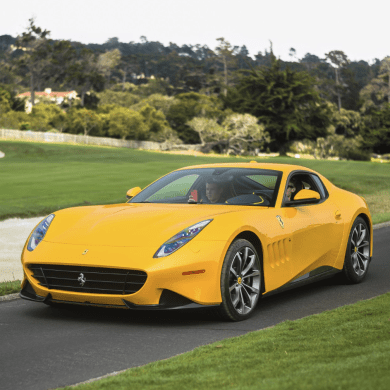
Ferrari SP 275 RW Competizione
Type: One-Off Special
Years: 2016
Production: 1 unit
Engine: 6.3 L Nat Asp V12
Power: 769 bhp @ 8500 rpm
Torque: 520 lb/ft @ 6750 rpm
0-60 mph: 2.9 seconds
Top Speed: 211 mph
The Ferrari SP 275 RW Competizione is a one-off, custom-built supercar created by Ferrari’s Special Projects division in 2016 for a dedicated collector. Based on the Ferrari F12berlinetta and inspired by the iconic 275 GTB from the 1960s. The SP 275 RW Competizione is powered by the same naturally aspirated 6.3-liter V12 engine found in the F12tdf, and gets exclusive styling elements, including a reimagined front grille, retro-inspired louvers on the fenders, a distinctive rear design, and yellow paint.
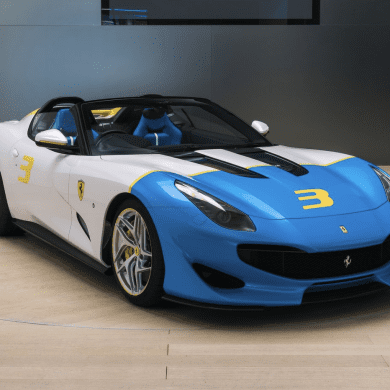
Ferrari SP3JC
Type: One-Off Special
Years: 2018
Production: 1 unit
Engine: 6.3 L Nat Asp V12
Power: 769 bhp @ 8500 rpm
Torque: 520 lb/ft @ 6750 rpm
0-60 mph: 2.9 seconds
Top Speed: 211 mph
The Ferrari SP3JC is a one-off model crafted by Ferrari’s Special Projects division in 2018. Built on the Ferrari F12tdf, it combines Ferrari’s powerful 6.3-liter V12 engine, producing 769 horsepower, with a custom open-top design that pays homage to classic Ferrari roadsters. The car features a striking blue and white color scheme with vibrant yellow accents. The SP3JC’s design includes bespoke details such as dual air intakes on the hood, transparent panels that reveal portions of the engine, and sculpted rear buttresses.
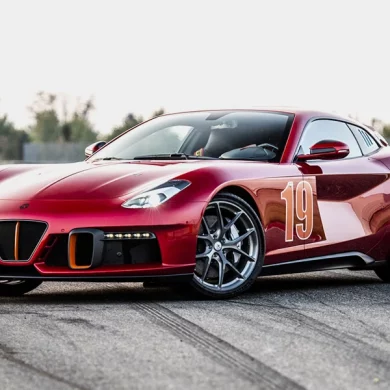
Ferrari Touring Superleggera Aero 3
Type: One-Off Special
Years: 2020
Production: 15 units
Engine: 6.3 L Nat Asp V12
Power: 730 bhp @ 8250 rpm
Torque: 509 lb/ft @ 6000 rpm
0-60 mph: 3.1 seconds
Top Speed: 211 mph
The Touring Superleggera Aero 3 is a stunning, limited-edition grand tourer crafted by the famed Italian design house Carrozzeria Touring Superleggera, unveiled in 2020. Inspired by the aerodynamics-focused designs of the 1930s and 1940s, particularly the iconic Alfa Romeo 8C 2900B, the Aero 3 combines classic styling cues with modern performance. Built on the chassis of the Ferrari F12berlinetta, the Aero 3’s unique design is characterized by a prominent dorsal fin running from the roof to the rear, echoing vintage racing aerodynamics and enhancing stability at high speeds.
The F12 is a beautiful car. Its Pininfarina-designed bodywork is elegant and timeless, and it's sure to turn heads wherever it goes.
Autocar
Ferrari F12berlinetta and F12tdf Buyer’s Guide
The Ferrari F12berlinetta and its track-focused sibling, the F12tdf (Tour de France), represent some of Ferrari’s finest front-engine V12 engineering, blending breathtaking power with refined GT comfort. Each model has distinct qualities, but both the F12berlinetta and F12tdf require specific maintenance and inspection due to their high-performance nature. Here’s what to consider when buying either of these Ferraris, including common issues, desirable options, and insights into their collectibility and future investment potential.
1. Engine Health and Reliability
Both the F12berlinetta and F12tdf are powered by a naturally aspirated 6.3-liter V12 engine, though the F12tdf’s engine is tuned to produce more power. This V12 is celebrated for its reliability and thrilling performance, but as with any high-performance Ferrari, regular maintenance is critical.
Oil and Fluid Changes: Regular oil changes with high-quality, Ferrari-approved oils are essential for V12 longevity. Look for consistent service records detailing oil and coolant changes to ensure the engine has been well-maintained.
Hydraulic Tappets and Valve Timing: The F12’s engine uses hydraulic tappets, which are reliable but can suffer from valve timing issues if not regularly serviced. Check that service intervals were followed to maintain optimal timing.
Cooling System: Overheating can be an issue if the cooling system hasn’t been maintained. Inspect for recent coolant flushes and check for any signs of coolant leaks around the water pump and radiator. Monitor the temperature gauge during a test drive to ensure the engine remains within normal operating temperatures.
F12tdf-specific Powertrain Enhancements: The F12tdf’s engine is tuned to produce 769 horsepower, an increase over the F12berlinetta’s 730 horsepower. Check for a documented history of regular performance inspections on an F12tdf, as the higher-tuned engine places additional stress on components.
2. Transmission and Clutch Health
Both the F12berlinetta and F12tdf feature Ferrari’s 7-speed dual-clutch F1 transmission, known for its rapid and seamless shifts. However, DCTs (dual-clutch transmissions) require specific care to avoid costly repairs.
Smoothness of Shifts: During a test drive, the F12’s transmission should feel smooth and seamless, both in automatic and manual modes. Any jerking, hesitation, or roughness in shifts may indicate early transmission wear or issues with the transmission control unit.
Transmission Fluid Changes: Regular fluid changes are essential for DCT longevity, ideally every two to three years. Confirm that the transmission fluid has been changed according to Ferrari’s guidelines, as neglected fluid can lead to excessive wear on transmission components.
Clutch Health: The F12’s DCT doesn’t have a traditional clutch wear issue, but if the car has seen frequent spirited or track driving, it’s essential to have the clutch pack inspected. The F12tdf’s more aggressive tuning may put additional strain on the DCT, so ensure any F12tdf has had recent transmission servicing.
3. Suspension and Handling Components
The F12’s suspension is a complex system designed to handle both road and track conditions with Ferrari’s SCM-E (magnetorheological) dampers and rear-wheel steering on the F12tdf. These components should be carefully inspected, particularly on models that have seen track use.
SCM-E Dampers: Both models feature magnetorheological suspension, which provides adjustable damping based on driving conditions. Over time, these dampers may leak or fail, so inspect for any signs of leaking fluid or abnormal suspension behavior.
F12tdf Rear-Wheel Steering (Virtual Short Wheelbase): The F12tdf introduced Ferrari’s Virtual Short Wheelbase system, which uses rear-wheel steering for enhanced agility. Ensure the rear-wheel steering functions correctly, as any issues with the electronic module or actuators can lead to costly repairs.
Suspension Bushings and Control Arms: Suspension bushings and control arms wear over time, especially if the car has seen extensive high-speed driving. Listen for any clunking sounds during a test drive, which may indicate worn components that require replacement.
4. Braking System and Carbon-Ceramic Brakes
Both the F12berlinetta and F12tdf come equipped with carbon-ceramic brakes, which offer superior performance but require proper maintenance and care.
Brake Rotor Condition: Carbon-ceramic rotors are durable but can be expensive to replace. Check for any signs of cracks or excessive wear, as replacements can be costly. If possible, inspect the service history for information on previous brake replacements or repairs.
Brake Pads: Check the condition of the brake pads and confirm that they have sufficient life remaining. Carbon-ceramic brakes are sensitive to heat, so ensure that the brakes have been well-maintained, particularly if the car has been used on track.
Brake Fluid and ABS Functionality: Regular brake fluid changes are necessary to maintain braking performance. Confirm recent fluid changes and ensure the ABS system operates smoothly, as electronic issues with ABS sensors can be expensive to repair.
5. Electrical System and Interior Components
Ferraris are known for their advanced electronics and luxury interiors, and both the F12berlinetta and F12tdf require specific care for interior and electrical components.
Infotainment and Instrument Cluster: Test all infotainment features, including navigation, Bluetooth, and audio functions, to ensure they work correctly. The instrument cluster should display all readings accurately, with no warning lights or error codes.
Sticky Interior Plastics: Like many Ferraris from this era, both models are prone to “sticky” buttons and interior plastics, caused by heat exposure. This is mostly a cosmetic issue, but restoring the surfaces can be costly.
Battery and Electrical Health: The F12 series can experience battery drain if not driven regularly. Check for recent battery replacements and confirm that a trickle charger has been used to maintain battery life. Verify that all electrical components, including power windows, lights, and electronic driving aids, function correctly.
6. Desirability and Future Investment Potential
The Ferrari F12berlinetta and F12tdf are both highly desirable models in Ferrari’s modern lineup, with each model appealing to collectors and enthusiasts for distinct reasons.
F12berlinetta Appeal: The F12berlinetta is one of Ferrari’s last naturally aspirated V12 grand tourers, offering a raw and thrilling driving experience. Its mix of GT comfort and supercar performance makes it an attractive choice for enthusiasts, and values for well-maintained examples are expected to remain strong, especially as Ferrari moves further toward hybrid and turbocharged engines.
F12tdf Investment Potential: The F12tdf, limited to only 799 units, is a rare and highly collectible Ferrari, especially cherished by collectors for its aggressive styling, track-focused performance, and exclusivity. Due to its rarity and iconic V12 configuration, the F12tdf has appreciated in value since its release, and its desirability is expected to continue increasing, particularly for low-mileage examples in pristine condition.
Long-Term Legacy: Both the F12berlinetta and F12tdf hold a special place in Ferrari’s V12 legacy, bridging Ferrari’s traditional engineering with cutting-edge technology. As the automotive industry evolves toward electrification, these naturally aspirated V12 models represent the end of an era, making them sought-after collectibles and solid investment options.
Conclusion
The Ferrari F12berlinetta and F12tdf offer a captivating blend of power, luxury, and exclusivity, representing the pinnacle of Ferrari’s naturally aspirated V12 heritage. When buying either model, prioritize examples with a documented service history, recent maintenance on critical components like the transmission and suspension, and minimal cosmetic wear. Both models stand as modern classics with strong investment potential, with the F12tdf in particular positioned as a highly desirable collector’s item. Whether you’re drawn to the grand touring appeal of the F12berlinetta or the track-ready thrill of the F12tdf, both models offer a remarkable ownership experience that captures the essence of Ferrari’s V12 tradition.
Ferrari F12 Images & Wallpapers
A curated collection of our favorite Ferrari F12 wallpapers and pictures.
The F12tdf is a weapon. It's a track-focused monster that takes the F12's performance to a whole new level.
Top Gear (at the time of launch)


